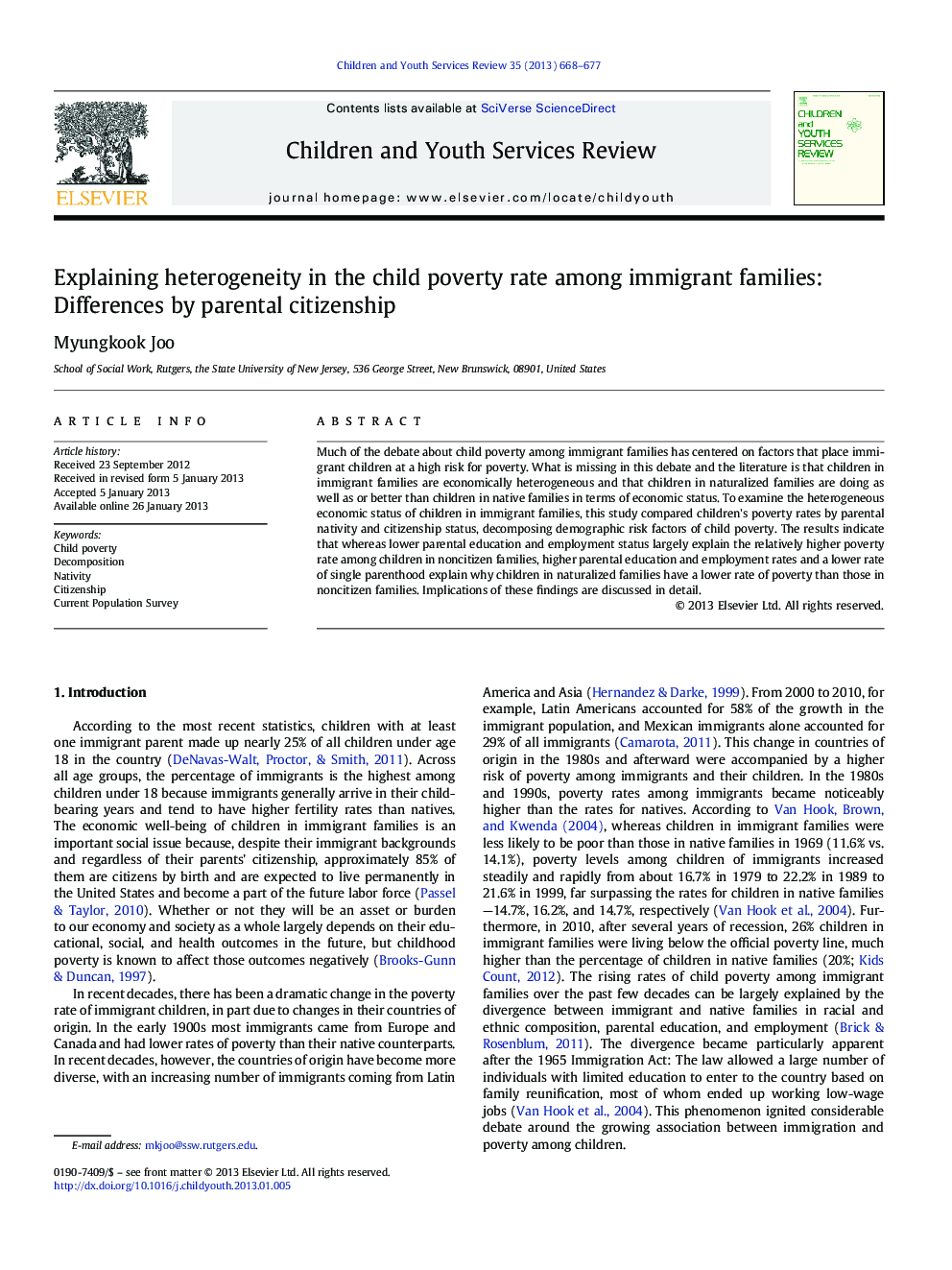| Article ID | Journal | Published Year | Pages | File Type |
|---|---|---|---|---|
| 346090 | Children and Youth Services Review | 2013 | 10 Pages |
Much of the debate about child poverty among immigrant families has centered on factors that place immigrant children at a high risk for poverty. What is missing in this debate and the literature is that children in immigrant families are economically heterogeneous and that children in naturalized families are doing as well as or better than children in native families in terms of economic status. To examine the heterogeneous economic status of children in immigrant families, this study compared children's poverty rates by parental nativity and citizenship status, decomposing demographic risk factors of child poverty. The results indicate that whereas lower parental education and employment status largely explain the relatively higher poverty rate among children in noncitizen families, higher parental education and employment rates and a lower rate of single parenthood explain why children in naturalized families have a lower rate of poverty than those in noncitizen families. Implications of these findings are discussed in detail.
► Children in immigrant families are economically heterogeneous. ► Low levels of education and work explain high poverty among noncitizen families. ► High levels of education and work explain low poverty among naturalized families
